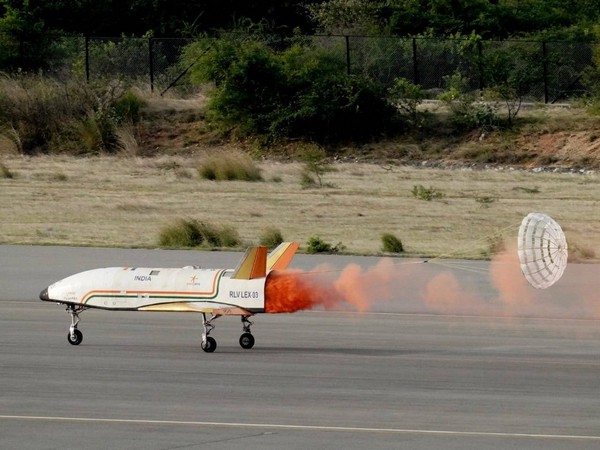IAF congratulates ISRO on RLV technology demonstrations through LEX trio
10 IST at the Aeronautical Test Range (ATR) in Chitradurga, Karnataka.

- Country:
- India
The Indian Air Force congratulated the Indian Space Research Organisation (ISRO) for achieving another success in the Reusable Launch Vehicle (RLV) landing experiment (LEX). The third and final test in the series of LEX (03) was conducted at 07:10 IST at the Aeronautical Test Range (ATR) in Chitradurga, Karnataka. Following the success of the RLV LEX-01 and LEX-02 missions, RLV LEX-03 re-demonstrated the autonomous landing capability of the RLV under more challenging release conditions (cross range of 500 m against 150 m for LEX-02) and more severe wind conditions. The winged vehicle, named 'Pushpak', was released from an Indian Air Force Chinook Helicopter at an altitude of 4.5 km.
From a release point 4.5 km away from the runway, Pushpak autonomously executed cross-range correction manoeuvres, approached the runway, and performed a precise horizontal landing at the runway centerline. Due to this vehicle's low lift-to-drag ratio aerodynamic configuration, the landing velocity exceeded 320 kmph, compared to 260 kmph for a commercial aircraft and 280 kmph for a typical fighter aircraft. After touchdown, the vehicle's velocity was reduced to nearly 100 kmph using its brake parachute, after which the landing gear brakes were employed for deceleration and stop on the runway. During this ground roll phase, Pushpak utilises its rudder and nose wheel steering system to autonomously maintain a stable and precise ground roll along the runway.
This mission simulated the approach and landing interface and high-speed landing conditions for a vehicle returning from space, reaffirming ISRO's expertise in acquiring the most critical technologies required for the development of a RLV. Through this mission, the advanced guidance algorithm catering to longitudinal and lateral plane error corrections, which is essential for the future Orbital Re-entry Mission, has been validated. Notably, the RLV-LEX uses multisensor fusion, including sensors like an Inertial sensor, Radar altimeter, Flush air data system, Pseudolite system and NavIC. Notably, the RLV-LEX-03 mission reused the winged body and flight systems as such without any modification, from the LEX-02 mission, demonstrating the robustness of ISRO's capability of design and reuse flight systems for multiple missions.
The mission, led by VSSC, was a collaborative effort involving multiple ISRO centres (SAC, ISTRAC, SDSC-SHAR), with significant support from the Indian Air Force (IAF), Aeronautical Development Establishment (ADE), Aerial Delivery Research and Development Establishment (ADRDE), Regional Centre for Military Airworthiness (RCMA) under the Centre for Military Airworthiness and Certification (CEMILAC), National Aerospace Laboratories (NAL), Indian Institute of Technology, Kanpur, Indian aerospace industrial partners, Indian Oil Corporation of India, and Airport Authority of India. S Somanath, Chairman, ISRO/Secretary, Department of Space, congratulated the team for their efforts in maintaining the success streak on such complex missions. Dr S Unnikrishnan Nair, Director of VSSC, emphasised that this consistent success boosts ISRO's confidence in the critical technologies essential for future orbital re-entry missions. (ANI)
(This story has not been edited by Devdiscourse staff and is auto-generated from a syndicated feed.)










